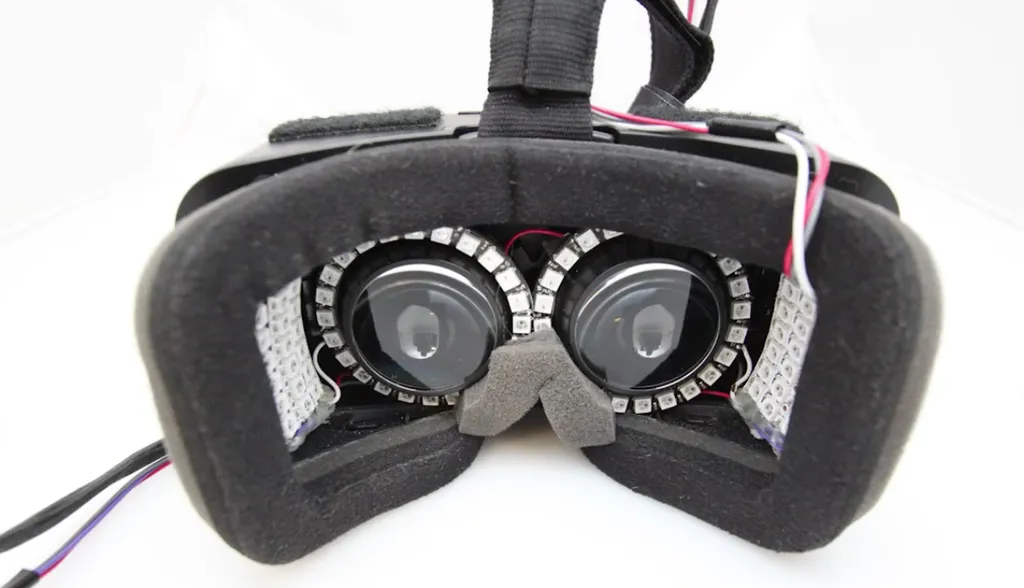Microsoft may not be making its own VR HMD to compete with the Oculus Rift, but its Research division is doing work that could help dramatically improve that device and others.
Microsoft Research’s Robert Xiao and Hrvoje Benko have this week posted a hugely intriguing video explaining its work in augmenting the field of view (FOV) of VR HMDs to bring them much closer in line with a human’s peripheral vision of around 180 degrees. The company’s explanation involves pairing the Oculus Rift DK2 – which has a FOV of 100 degrees – with Sparse Peripheral Displays. The pair claim that this solution, which requires modifications made to the HMD itself, is low weight and inexpensive. They even have a prototype, labelled SparseLightVR.
Sparse Peripheral Display employs a set of 70 LEDs, placed around the display of the DK2’s lenses. According to the engineers, adding these creates “additional contextual information”, providing a 170 degree FOV in VR. Using the Unity engine, the pair are able to emit colour coordinated lights from the LEDs that are consistent with what can be seen in the given VR world. A countryside view, for example, would have LEDs shine green where the grass runs along the bottom, and transition to blue further up where the sky sets in.
Crucially, the pair claim that their work helps to combat the dreaded simulator sickness, especially when employing a concept called Peripheral Countervection Motion. This is said to emit lights that simulate a “motion effect” in the user’s peripheral vision when moving in VR using a gamepad. In its research, the engineers noted that 11 of 14 people that tested this effect stated that it had reduced the effects of motion sickness.
Xiao and Benko have also come up with an AR twist of the impressive project called SparseLightAR. This prototype has been created from the shell of the Gear VR. The untethered device uses 112 LEDs for a 190 degree FOV. It’s a similar concept, and the video above shows how the LEDs are able to continue replicating the movement of a multicoloured bouncing ball even as it moves off of the traditional displays. Microsoft’s own HoloLens MR display only holds an FOV of around 40 degrees, so this tech has obvious applications there.
Though undeniably primitive, Xiao and Benko could well be onto something with these early prototypes. Sparse Peripheral Delivery could prove to be an interesting halfway house for larger VR and AR FOVs until it’s possible to produce HMDs that match up to human capabilities. Of course, we’d love to see the pair’s work applied to the consumer version of the Oculus Rift or HTC Vive, though Sony’s PlayStation VR arguably stands to benefit the most thanks to its seated focus. Don’t count on Microsoft-made tech finding its way into the hardware of its biggest gaming rival, though.


























